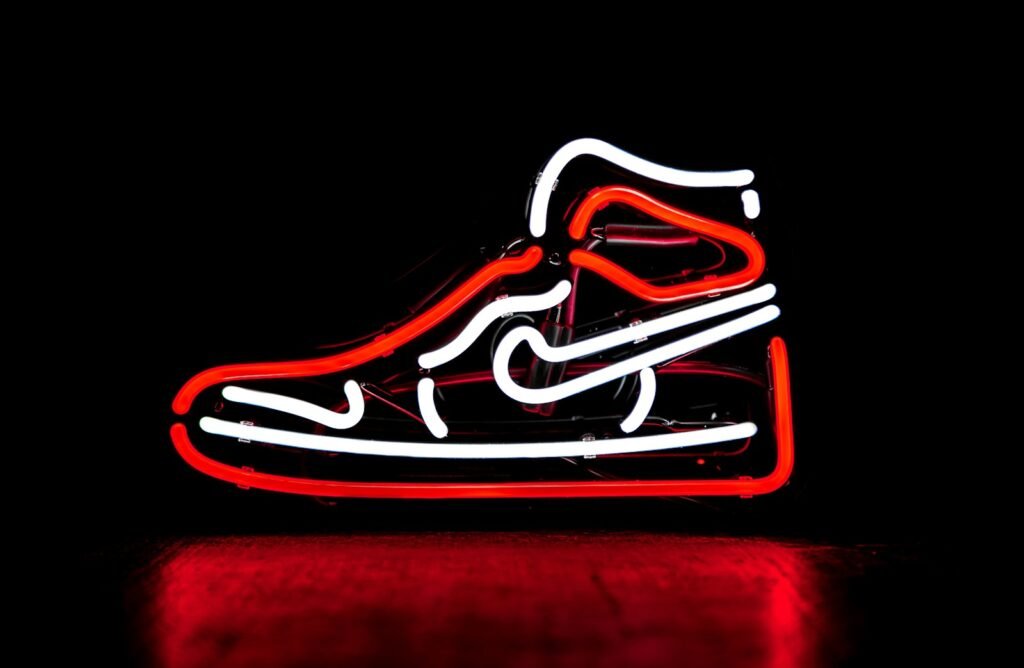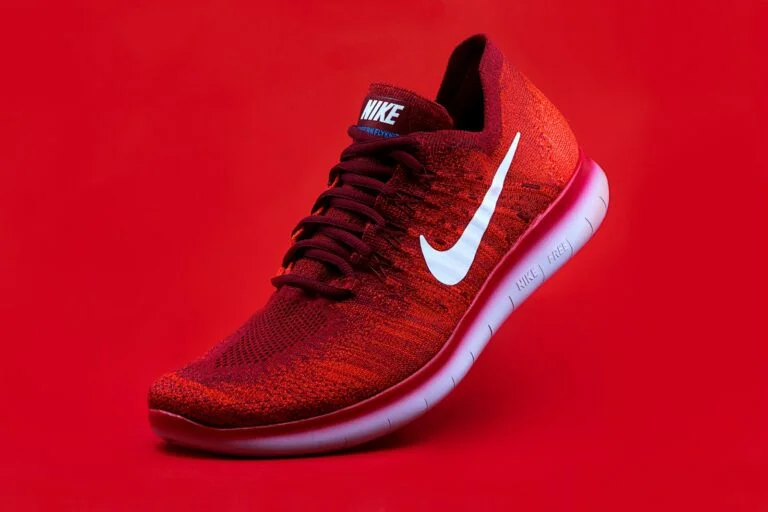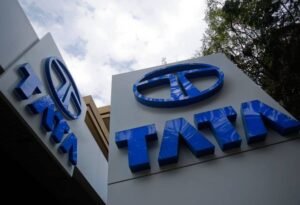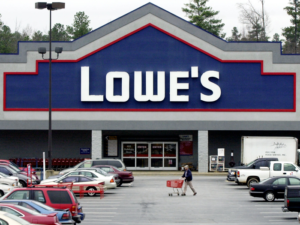Did you know that Nike, the global athletic wear giant, has a market cap of over $230 billion and generates annual revenue of approximately $46.71 billion? With such immense scale and impact, it’s crucial for Nike to continually assess its strengths, weaknesses, opportunities, and threats to maintain its market position and drive future success. In this article, we will conduct a comprehensive SWOT analysis of Nike, examining the company’s internal and external factors that shape its strategic decisions. By delving into Nike’s strengths, weaknesses, opportunities, and threats, we can gain valuable insights into how this iconic brand navigates the fiercely competitive athletic wear industry.
Jump Ahead To :
Key Takeaways:
- Nike’s strong brand awareness and wide customer base contribute to its market leadership in the athletic wear industry.
- The company faces challenges such as poor labor conditions and lawsuits related to gender pay bias.
- Opportunities for Nike’s growth include emerging markets, innovative product development, and acquisitions.
- Nike’s main threats include intense competition, counterfeit products, and margin pressures.
- Despite its weaknesses and threats, Nike remains a financially robust company with a commitment to sustainability.
Overview of Nike
Nike, Inc. is an American multinational corporation founded in 1964 by Bill Bowerman and Phil Knight. Headquartered in Beaverton, Oregon, Nike is a leading brand in the global athletic wear industry. The company’s primary focus is on providing high-quality footwear, apparel, sports equipment, and accessories for athletes. Over the years, Nike has developed a strong reputation for its innovative products and iconic branding. Some of Nike’s notable competitors include Adidas, Under Armour, and Puma.
| Company | Year Founded | Headquarters | Products | Competitors |
|---|---|---|---|---|
| Nike, Inc. | 1964 | Beaverton, Oregon | Footwear, apparel, sports equipment, accessories |
|
Nike’s Strengths
Nike, a multinational corporation founded in 1964, possesses several strengths that contribute to its dominance in the athletic wear market.
- Brand Awareness: Nike’s brand recognition and value are unparalleled. The company’s iconic logo and memorable slogan have solidified its position as one of the most recognizable brands worldwide.
- Customer Base: With millions of loyal customers, Nike maintains a massive global customer base. Consumers actively engage with the brand, participating in Nike events and providing valuable feedback.
- Sustainability Initiatives: Nike’s commitment to sustainability sets it apart from its competitors. The company has implemented various initiatives to address environmental issues and promote responsible manufacturing practices.
- Marketing Capabilities: Nike’s superior marketing capabilities are evident in its successful campaigns and effective use of social media. The company consistently targets a wide range of customers, enabling continued brand growth.
- Market Share: As a market leader in the footwear industry, Nike captures a significant portion of the global athletic footwear and apparel market. The company’s high market share reflects its strong position and competitive advantage.
| Strength | Description |
|---|---|
| Brand Awareness | Nike’s globally recognized brand and iconic logo contribute to its immense brand value. |
| Customer Base | With millions of loyal customers, Nike benefits from a vast and engaged consumer base. |
| Sustainability Initiatives | Nike’s commitment to sustainability differentiates it from competitors, addressing environmental concerns. |
| Marketing Capabilities | Nike’s superior marketing capabilities enable effective campaigns and customer targeting. |
| Market Share | Nike holds a significant portion of the global athletic footwear and apparel market, demonstrating its market leadership. |

Nike’s Weaknesses
While Nike boasts various strengths in the market, it is not without its weaknesses. These weaknesses have the potential to impact the company’s reputation, financial stability, and overall market position.
One of Nike’s significant weaknesses pertains to its poor labor conditions in foreign countries. The company has faced considerable criticism and accusations of forced labor, child labor, inadequate wages, and unsafe working conditions. These allegations have tarnished Nike’s image and raised concerns among consumers and stakeholders.
In addition, Nike faces financial threats that could undermine its stability and growth. The company has pending debts and struggles with potential financial challenges. These factors can hamper Nike’s ability to invest in research and development, product innovation, and market expansion.
Lawsuits related to gender pay bias and discrimination present further challenges for Nike. These legal battles not only have financial implications but also affect the company’s reputation and brand perception. Such legal disputes can erode consumer trust and loyalty, ultimately impacting Nike’s market position.
Furthermore, Nike’s over-dependence on the North American market is a weakness. This lack of diversification leaves the company vulnerable to shifts in the market, changing consumer preferences, and economic uncertainties. To mitigate this weakness, Nike should focus on expanding its presence in emerging markets and diversifying its product offerings.
| Weaknesses | Impact |
|---|---|
| Poor labor conditions in foreign countries | Negative impact on brand image and reputation |
| Financial threats and pending debts | Constraints on investment and potential financial instability |
| Lawsuits related to gender pay bias and discrimination | Financial implications and damage to brand perception |
| Over-dependence on the North American market | Vulnerability to market shifts and changing consumer preferences |
Nike’s Opportunities
Despite its weaknesses, Nike has several opportunities for growth. Here are some key opportunities that the company can capitalize on:
1. Emerging Markets
Nike has the opportunity to expand its presence in emerging markets such as China, India, and Brazil. These markets offer a growing consumer base and increasing purchasing power. By investing in these regions, Nike can tap into new revenue streams and strengthen its global market position.
2. Innovative Products
Nike has a history of developing innovative products that resonate with consumers. The company can continue to explore opportunities in the technology and fashion sectors to create cutting-edge products that meet evolving customer needs. By staying ahead of trends and leveraging its expertise in design and performance, Nike can maintain its competitive edge.
3. Direct-to-Consumer Expansion
Nike has the opportunity to further expand its direct-to-consumer channels, including online platforms and retail stores. By strengthening its e-commerce presence and creating engaging brick-and-mortar experiences, Nike can establish a direct connection with customers, enhance brand loyalty, and gain valuable consumer insights.
4. Acquisitions
Nike can leverage acquisitions to enhance its offerings and expand its market reach. By acquiring start-ups or companies with complementary products or technologies, Nike can accelerate innovation, access new customer segments, and increase its market share. Strategic acquisitions can also help Nike stay ahead of competitors and capitalize on emerging trends.
Overall, Nike has a range of opportunities that can fuel its growth and success in the global athletic wear market. By strategically pursuing emerging markets, focusing on innovation, expanding direct-to-consumer channels, and making strategic acquisitions, Nike can position itself for continued success in the ever-evolving industry.
Nike’s Threats
Nike faces several threats in the market that have the potential to impact its business. These threats arise from intense competition, counterfeit products, and margin pressures.
Competition
The athletic wear industry is highly competitive, with rival brands constantly striving to capture market share. Nike faces significant competition from brands such as Adidas, Under Armour, and Puma. These competitors pose a threat to Nike’s market position and revenue.
Counterfeit Products
Counterfeit Nike products pose a significant threat to the brand. These counterfeit goods not only impact Nike’s reputation but also lead to revenue losses and customer dissatisfaction. The availability of counterfeit products can undermine Nike’s authenticity and trustworthiness, affecting its market share and sales.
Margin Pressures
Nike faces margin pressures due to various factors such as input cost inflation and wholesale discounting demands. Rising raw material costs and production expenses can squeeze Nike’s profit margins. Additionally, wholesale partners’ expectations for higher discounts can further impact Nike’s profitability.
| Threats | Description |
|---|---|
| Competition | Intense competition from brands like Adidas, Under Armour, and Puma. |
| Counterfeit Products | Presence of counterfeit Nike products impacting brand reputation and sales. |
| Margin Pressures | Challenges related to input cost inflation and wholesale discounting demands. |

Nike’s Financial Performance
Nike has consistently demonstrated strong financial performance, solidifying its position as a global leader in the athletic wear industry. In FY22, the company reported impressive revenue figures, totaling US$46.71 billion. This robust revenue stream is indicative of Nike’s ability to capture significant market share and meet strong customer demand for its products.
Furthermore, Nike’s net income for FY22 amounted to an impressive US$6.04 billion. This significant net income reflects the company’s ability to generate profits and maintain a solid financial position in the market.
A closer look at Nike’s financial results reveals a trend of steady growth, showcasing the brand’s resilience and market dominance. The company’s direct sales, which include online and retail operations, have also experienced positive growth, further bolstering its financial success.
| Year | Revenue (in billions USD) | Net Income (in billions USD) |
|---|---|---|
| 2020 | $43.8 | $2.54 |
| 2021 | $44.5 | $2.54 |
| 2022 | $46.71 | $6.04 |
The financial performance of Nike underscores its strong market position and demonstrates the brand’s ability to navigate challenges and deliver consistent results. With its robust revenue, net income, and continued growth, Nike remains a formidable force in the global athletic wear industry.
Nike’s Sustainability Initiatives
Nike is committed to sustainability and has implemented a range of initiatives to address environmental issues. The company recognizes the importance of environmental responsibility in the current global context and aims to contribute to finding solutions to these challenges. Nike has set goals for renewable energy use and carbon emissions reduction as part of its sustainability efforts.
By focusing on renewable energy and reducing carbon emissions, Nike is actively working towards minimizing its environmental impact and protecting the planet. This commitment aligns with the growing global concern for sustainability and demonstrates Nike’s dedication to being an industry leader in addressing environmental issues.
Nike’s Future Growth Strategies
To drive future growth, Nike will implement a range of strategic initiatives. These strategies will enable the company to expand its market presence, diversify its product offerings, penetrate new markets, and further enhance its brand positioning and customer experience.
Expansion into Emerging Markets
To capitalize on untapped opportunities, Nike will focus on expanding into emerging markets. Countries such as China, India, and Brazil offer immense potential for growth due to their large consumer populations and increasing disposable incomes. By establishing a strong foothold in these markets, Nike can tap into new customer segments and drive sales growth.
Product Diversification
In addition to its existing product categories, Nike will explore product diversification to broaden its offerings. This strategy involves introducing new categories of athletic wear, sports equipment, and accessories to cater to evolving consumer preferences and lifestyle trends. By expanding its product range, Nike can attract a wider range of customers and increase its market share.
Market Penetration
Market penetration will be a key focus for Nike as it aims to increase its market share in existing markets. The company will leverage its strong brand recognition, marketing capabilities, and distribution networks to capture a larger portion of the athletic wear market. By implementing targeted marketing campaigns and strengthening its relationships with retailers, Nike can drive brand loyalty and gain a competitive edge.
Brand Positioning and Customer Experience
To maintain its position as a leading athletic wear brand, Nike will prioritize brand positioning and customer experience. The company will strive to deliver exceptional product quality, innovative designs, and seamless customer service across all touchpoints. By continuously enhancing its brand image and providing a superior customer experience, Nike can differentiate itself from competitors and foster long-term customer loyalty.
| Growth Strategy | Description |
|---|---|
| Expansion into Emerging Markets | Focus on entering and expanding in high-growth markets, such as China, India, and Brazil. |
| Product Diversification | Introduce new product categories and expand offerings beyond footwear and apparel. |
| Market Penetration | Increase market share in existing markets through targeted marketing campaigns and strong retailer partnerships. |
| Brand Positioning and Customer Experience | Strengthen brand positioning and deliver superior customer experience to maintain leadership in the market. |
Conclusion
After conducting a SWOT analysis of Nike, it is evident that the company has a strong position in the athletic wear industry. Nike’s strengths, including its brand awareness, customer base, and marketing capabilities, have contributed to its market leadership. The company also has significant opportunities for growth, such as expanding into emerging markets, developing innovative products, and focusing on sustainability initiatives.
However, Nike does face certain weaknesses and threats. The company’s poor labor conditions in foreign countries and lawsuits related to gender pay bias represent significant weaknesses. Additionally, Nike must contend with intense competition, counterfeit products, and margin pressures in the market.
In order to maintain its market position and drive future success, Nike should leverage its strengths and address its weaknesses. By capitalizing on opportunities and overcoming threats, Nike can continue to be a dominant force in the athletic wear industry and seize new growth prospects.






